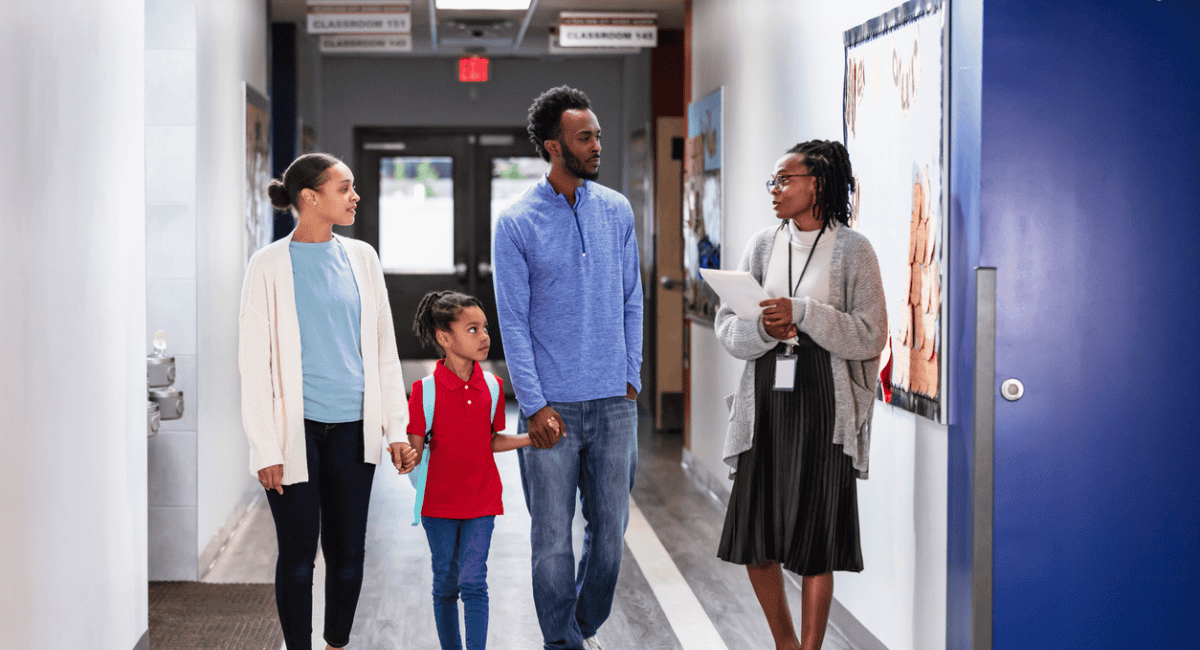In this second installment of School Pathways’ Independent Study Essentials Series we will discuss principles and best practices for designing an onboarding process for Independent Study (IS), virtual, and hybrid learning. With each piece, we will share advice from educators who are deeply versed in IS, and we hope this series can serve as a resource for others creating or updating their own programs.
If you missed it, part one covers touchstones for devising your program-wide structure for Independent Study. We would also like to give special thanks to the educators who helped inform this series and are featured throughout: Dr. Lesley Clifton, Machele Kilgore, J.J. Lewis, Justin Lim, and Dave Meyer.
[ Download The Full Guide Now ]
Why Onboarding is Essential—Especially with Virtual Learning
Having an onboarding plan when preparing for a new school year plays a vital role in ensuring collective success for students, teachers, and schools as a whole. Whether someone is brand new to a program or just entering a new grade, they won’t have all the tools and information to get going on their own. Introducing how your IS program will work, outlining what students can expect throughout their learning journey, and building person-to-person connections will allow all parties to understand expectations, effectively organize, and become comfortable asking questions and seeking guidance.
Therefore it is important to plan activities grounded in deliberate strategies that will make the onboarding process as beneficial as possible and start everyone off on the best foot. While it may not be one-size-fits-all you can apply general best practices and principles on different scales.
Setting Expectations Even Before Enrollment
Part of addressing student needs includes having a clear description of your program’s operations from the start. This lets interested parties know what is expected of them even before signing up. The enrollment application should present students with a document that fully describes the program and includes information such as how content will be delivered and relevant online providers that will be utilized.
Beyond logistics, understanding your program goals and the key qualities you would like to encourage in students is another step to help you get ahead even before the learning begins. J.J. Lewis, Superintendent & CEO of Compass Charter Schools, explains how his organization truly dug into outlining its vision for scholars in order to communicate that to prospective students. To start, Compass partnered with the Learner-Centered Collaborative, an organization that works with educators “to define whole-learner outcomes, design meaningful learning experiences, and create the enabling conditions for their unique journey to inclusive and equitable learner-centered education.” The schools also created scholar profiles so that prospective students can envision their paths as scholars. Lewis’ staff engaged in an ideation process with their Scholar Leadership Council and Parent Advisory Council, after which staff settled on a set of profiles. Now, when someone new joins campus, they’re going to have a clear understanding of what it is Compass hopes they’ll take away from their learning experience.
Even without that level of time and resources, creating a structured understanding of the scholar experience is an excellent way to set a roadmap for staff to understand their mission and relationship with students and for potential students to better envision what their time at school will bring.
Preparing Teachers and Staff in an Independent Study Environment
When onboarding for the new school year, it is just as important that staff members feel as supported as incoming students. Machele Kilgore, CCIS Co-Executive Director and Alternative Education Principal at Orange County DOE, recommends talking to other educators during the onboarding process and throughout the school year to create a sense of community and support. That could look like an internal mentor for a new staff member or reaching out to people in a similar position at other schools across your state to see how they are successfully running and managing their own IS programs. Kilgore also recommends that programs conduct weekly staff meetings for teachers to discuss the student trends they’re seeing and come up with ways to accommodate and guide students who might be struggling. Again, these meetings kick off before the school year even begins.
Programs should also prioritize creating opportunities for teachers and staff to meet with students one-on-one prior to the start of the school year. More on that to come, but it’s important to note the significance of strong human-to-human relationships. Manageable roster sizes also enable educators to invest in building connections with students and their at-home support network.
Onboarding Students for Virtual Learning
One benchmark best practice that many Independent Study programs do to help facilitate student onboarding is holding a beginning of the year event. This can start with some essentials, as Dr. Lesley Clifton, Principal at Escondido Charter, explains. Students may meet an intake coordinator to get the basics and a tour, followed by administrator and principal introductions to learn more about the program philosophy and expectations, then meet with teachers to actually break down the student handbook, class setup, and further details. This is a great way to ensure that students, parents, and educators are on the same page and no parties are left out of the loop.
Beyond that, Dave Meyer, Chief Academic Officer at The Classical Academies, shares about their new school year conference, “Jumpstart.” Students and families get to attend breakout groups spanning logistics like curriculum-specific how-tos and pedagogy-based instructional practices like how to differentiate between two children in one home or students with different learning needs.
Similarly, two weeks before classes begin, Compass Charter Schools host their “Weeks of Welcome.” In addition to topics focused on the academic programs, they hold specific sessions highlighting different support programs such as their engagement department, counseling services, and special education. Through these breakout meetings, staff members are able to do a deep dive into specific support options for scholars and families that might otherwise go unnoticed. Regardless of scale, this type of orientation allows students and families to get a further overview of the program, ask questions, and meet teachers and administrators to start building individual relationships. These are also recorded and shared with families who may have missed the session or who enroll later in the school year.
Another excellent tip for preparing the student body before the school year begins is sending periodic summer emails with educational information and resources. This is a great way to make sure those expectations are set in the lead-up to an orientation event.
Face-to-Face Introductions and Onboarding At-Home Support Systems
Clifton also emphasizes that providing opportunities for students and guardians to interact with staff prior to beginning an Independent Study program greatly increases the chance of student success. Connecting a face to their teacher establishes a relationship beyond a teacher name that assigns grades through a screen. We know that relationship building may be tricky based on the size of your program, but offering anything from one-on-one meetings to breakout sessions that detail support systems and facilitate face-to-face hellos will go a long way.
Parent/guardian teacher conferences are another great tool to get specific about at-home support systems. For Independent Study students, especially those in lower grade levels, it’s important for those at-home support systems to really understand their contribution to this equation. Families sometimes act as part-time instructors themselves; even if not, they play an essential role as coaches and mentors throughout a student’s educational career. So when you conduct meetings to break down the courses, syllabus, and master agreement, make sure the parents or guardians are present and engaged. You can even schedule dedicated time to meet just with the relevant guardians.
Ensure that students and parents understand all of your accountability systems and what may happen if they start falling behind and need assistance. In most learning environments, but especially with Independent Study, virtual, or hybrid– the presence of an at-home support system will significantly impact a learner’s success. So it’s essential to treat onboarding as a holistic and integrated process with all parties involved.
Key Takeaways and What’s Next
Deliberate effort during the onboarding process can lead to night and day results for setting expectations and preparing students, staff, and family members. The idea of onboarding starts even before enrollment, and hosting in-person events prior to the school year proves especially beneficial for an independent study, virtual, or hybrid program.
The next part of this series will cover curriculum planning, including popular formats and providers.





